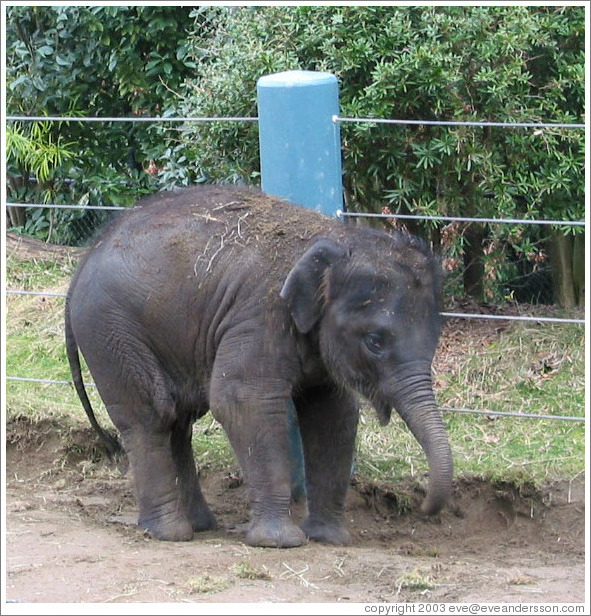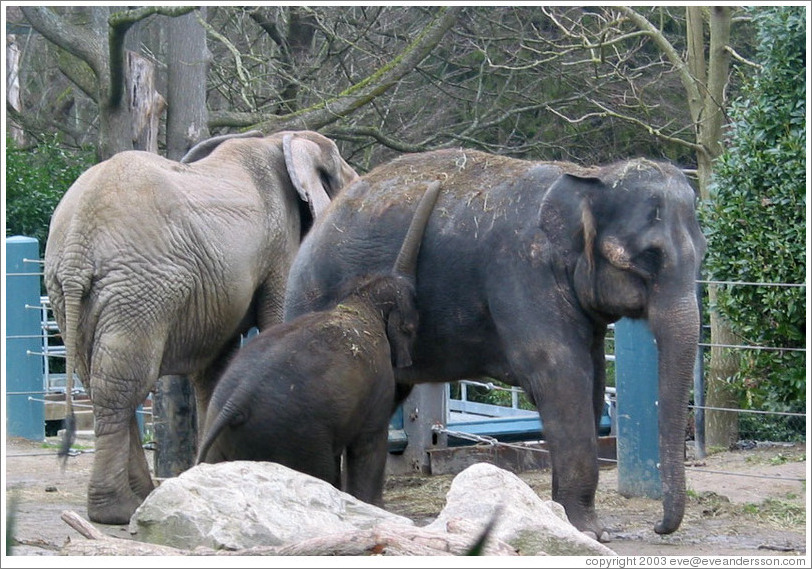Woodland Park Zoo Elephants: An analysis


It took decades, but Seattle finally got its own baby elephant. In 2000, an Asian female named Hansa was born at Woodland Park Zoo, instantly bewitching the public. But 6 ½ years later, when she was found dead on the elephant-barn floor early one morning, zoo officials knew their gamble had failed. A strain of EEHV or elephant herpes virus had been ravaging baby elephants and little Hansa had fallen victim to the deadly disease. What's the story behind this story?

Up until recently, the Woodland Park Zoo in Seattle, Washington has held three elephants: two Asian females called Bamboo (47) and Chai (35), and a single African female elephant called Watoto who died this year at the age of 45. Hansa, Chai's daughter, lived from 2000 to 2007 before dying of the feared elephant herpes virus. The controversy raging over the Woodland Park Zoo elephants now is that after Watoto's death, the zoo has chosen to send Bamboo and Chai to another zoo, while activists have protested this decision, insisting that they be sent to a sanctuary instead.

So the debate between the remaining two Asian elephants at the Woodland Park Zoo rages, with neither side giving way. On one side, the growing majority of zoo members and animal rights activists lobby for Bamboo and Chai to be sent to a sanctuary after their long time in captivity. Meanwhile, the zoo administration is insisting that their two elephants will be sent to another AZA (Association of Zoos & Aquariums) facility. The controversial move is being explored by the zoo and a decision will be made by the end of spring of 2015.

First, there is a mound of evidence that Bamboo and Chai have fared poorly at the Woodland Park Zoo and sending them to another zoo would be not the best idea. Bamboo and Chai have exhibited stereotypical behaviors common in distressed zoo elephants who bob their head and rock back and forth. Not to mention Seattle's less than mild climate that is not ideal for elephants or that the their exhibit is quite small, even for zoo elephants. And of course, one should not forget the attempts to artificially inseminate Chai dozens of times. Wouldn't it be better to send them to a sanctuary where they could live out the rest of their days?

On the other hand, consider the zoo's point of view. Bamboo and Chai has been part of their family for decades and have lived in the hearts and souls of many Washington residents. The zoo argues that Bamboo and Chai can live out their days as ambassadors to species which is a valid point. The fact that people are inspired to do conservation work after visiting zoos works well for the zoo's argument that no one would be able to see Bamboo and Chai at the sanctuary. Plus, there are zoos that are equipped with state-of-the-art facilities for elephants. For example, the Los Angeles Zoo spent $42 million of their Elephants of Asia exhibit which only holds three elephants (it's maximum capacity is eight elephants with their young).
The debate is going back and forth and the zoo will soon make a decision. Will they choose to send their elephants to a sanctuary like so many zoos before them or will they continue the increasingly controversial method of keeping elephants in zoos.
What's do you think is best for the elephants?